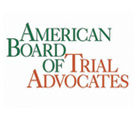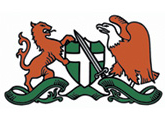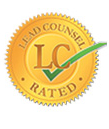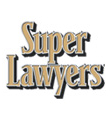Walking is a therapeutic activity and one that helps you exercise without the need for expensive fitness equipment. However, walking presents an increasing risk to pedestrians in California due to motorists’ negligence and sometimes pedestrians.
Being in a pedestrian accident is devastating since you lack the protection of a car, helmet, or other protective gear. Your body absorbs the direct impact of a crash, often with fatal or life-changing injuries.
Los Angeles Car Accident Attorney works with families and victims of pedestrian accidents in California. We help you file a case, identify the at-fault party, collect and present relevant evidence, and negotiate your claim to get the fairest settlement depending on your injuries and losses.
An Overview of Pedestrian Accidents in California
Statistics by the California Office of Traffic Safety indicate that more than 893 pedestrians were killed in 2018 on California roads. California also records a pedestrian fatality rate of about 25% higher than the country’s average.
Drivers are usually at fault for about 50% of all pedestrian accidents in California. Drivers continue causing pedestrian accidents despite there being rules to protect pedestrians.
Drivers are required to take reasonable care to ensure pedestrians are safe. Some of these laws require that:
- Drivers yield the right of way to a pedestrian crossing at a marked or unmarked crossway.
- Drivers should reduce their speed regardless of the posted speed limit if a pedestrian is present on the roadway.
- Drivers must slow down as they approach a crossway and be ready to stop.
- Drivers must stop at least five feet away from the crosswalk to give pedestrians way.
However, these rules do not free pedestrians from the requirement to care for themselves while on the road, including practicing the following safety tips:
- Obeying traffic rules
- Walking on designated pedestrian areas
- Avoiding distracted walking such as being on the phone
- Checking for vehicles before crossing a street even at designated areas, (a good idea is to make eye contact with the motorist to ascertain that he or she sees you).
- Wearing bright-colored clothing or reflective clothing especially when walking at night
Pedestrian accidents also vary by type, depending on where they occur and the parties involved. The common ones include:
- Hit and run accidents where the motorist hits a pedestrian and fails to stop. Drivers who commit hit and run accidents are criminally culpable and could be charged for a hit and run or a lesser offense. If convicted, you can use the conviction records as evidence of the guilt of the at-fault party.
- Pedestrian accidents could also be injured in intersection accidents since most drivers pay more attention to other motorists than to pedestrians when crossing an intersection. These accidents can be severe, especially if two or more cars collide, sandwiching a pedestrian.
- Backing up accidents, particularly in driveways or parking lots where cars tend to move in reverse. Children are at a higher risk of being in these accidents since they are less visible to the driver.
Common Causes of Pedestrian Accidents
Pedestrian accidents result from different causes, including other pedestrians, motorists, or unleashed pets on the road. The common causes of pedestrian accidents in California include:
- Unleashed dogs, especially large dogs, can knock pedestrians down, causing them to suffer injuries. In some cases, dogs could chase after pedestrians causing them to suffer injuries in case they run into the streets. Dog owners are supposed to leash their animals while out in public. While dog leash laws vary by city, Los Angeles expects dog owners to leash them or keep them controlled while in public.
- Weather conditions such as snow on the sidewalk make the crosswalk slippery, increasing the risk of accidents. Walking at night reduces visibility, especially along unlit streets.
- A motorist’s failure to yield to pedestrians at designated crossways and intersections can lead to pedestrians’ collisions. Accidents due to failure to yield are usually the motorists’ fault, especially where the pedestrian had the right of way.
- Pedestrians could also be injured if they walk on undesignated areas, causing conflict with vehicles.
- Poor maintenance of crosswalks or pavements could lead to pedestrian injuries if they cause them to slip, fall, or stumble on loose materials on the walkway.
- Other pedestrians could also cause injuries to pedestrians. For example, a runner using the sidewalk has the speed and force of the runner can knock down a pedestrian and easily cause injuries.
- Buses or trucks that drive too close to the sidewalk are likely to hit pedestrians with their protruding side mirrors. When such a bus is driving, the force applied is sufficient to knock down a pedestrian and cause serious head and neck injuries.
- Cyclists on the sidewalk are also a risk to pedestrians. While it is legal for cyclists in Los Angeles to use the sidewalk, they should exercise reasonable care to ensure that pedestrians are safe.
- Jaywalking and distracted walking also increases the risk of suffering injuries amongst pedestrians. Such distracted and dangerous behavior could lead you into the streets where you are at risk of being hit by motorists.
- Construction sites also pose a risk to pedestrians, especially if these occur near or along sidewalks. Pedestrians could be injured by falling debris or stumble on debris along the sidewalk.
Some of the common injuries pedestrians sustain in an accident include:
- Minor injuries such as cuts and bruises
- Broken bones
- Head, neck and spinal injuries
- Internal injuries
- Brain injuries
- Concussions
- Facial trauma
Groups such as children and older adults are at a higher risk of being in pedestrian accidents as are intoxicated people.
What to Do After a Pedestrian Accident
Pedestrian accidents are devastating. They not only cause severe injuries but also leave hundreds of families every year without their loved ones.
These accidents could be due to motorists’ negligence, poor construction, and maintenance of crossways and construction sites.
Whatever the cause of the accident, understanding what to do can save you some problems down the road and prepare you to handle a civil suit against the at-fault party.
One important thing you can do is visit a doctor for an evaluation. Whether you feel all right or do not have apparent signs of injury, notify the doctor that you have been in an accident so that he or she can check for the common injuries after a road accident.
Keep copies of your medical receipts, diagnosis, and medication for future use if you decide to file a case against the at-fault party. If you cannot take yourself to the hospital, call 911, or have someone call them or request a person to take you to the nearest hospital or ER.
Ensure that you follow all the treatment guidelines to avoid the risk of worsening your injuries. The party at fault could also claim that you were not injured and that your injuries are due to your negligence if you fail to adhere to treatment guidelines.
If you can, collect evidence from the scene, including witness testimony, photographs, and videos. Collect details of other people involved in the accident, including motorists, cyclists, and other pedestrians. For instance, you should include the name, contact information, insurance information, and vehicle details of all drivers involved in the accident. Where possible, take pictures of your injuries and progress in recovery.
Take detailed notes after the accident and during the recovery period. These notes should include details of:
- The weather conditions on the day of the accident
- The events at the time of the accident
- Any witnesses or people you were with when you were injured
- Your experience during and after the accident
After the accident, the notes should include details of your injuries, the impact the accident has on your life, and the physical and mental state since the accident.
Such information will help you, especially when seeking non-economic damages. These damages are hard to quantify and depend on how well you represent your case and your injuries.
Report the accident to the police where applicable and obtain a police report. The police will record the details of the accident and collect the relevant evidence from the scene. You can obtain the police report to use as part of your evidence when filing a claim.
Refrain from admitting fault while at the scene of the accident or later. Do not say things like "I'm sorry I was distracted" or "this is all my fault." Other parties in the accident can use these words to absolve themselves of any blame for the accident and, in some cases, sue you for damages.
Avoid settling with the insurance company even if you feel the amount they are offering is sufficient. Another related mistake to avoid is thinking that the insurance company is working for you.
Remember that the insurance company wishes that you were at fault, partially or fully, for your injuries to pay the least amount possible.
They are also going to offer you a low-balled offer in the hopes that you settle. Such a mistake could leave you with a grossly unfair settlement and piling medical bills that you cannot settle. Take proactive steps by working with a pedestrian accident attorney who understands the tricks insurance companies use and has strong negotiation skills.
It would help if you also talked to an attorney to help you value your case. You cannot recover the value of your damages if you do not understand what you have lost. An attorney will help you calculate the damages you suffer and provide an estimate of the value of your case.
Understanding the value of your case will help in other decisions such as:
- Whether to sue the at-fault party
- The least amount you could settle for
- The court in which to file your claim (small claims are presented through the small claims court)
Seeking legal help is one of the essential things you can do following a pedestrian accident. Besides the recovery journey you or your loved one is on, you still need to gather the relevant evidence, fill court documents, and present your case if you choose to sue for damages.
These steps can be overwhelming even in the absence of an injury. Therefore, hiring an attorney relieves you of this burden and allows you to focus on your recovery or adjustment to your post-accident reality.
However, finding the best attorney can be complicated, but you can make it easier by following these steps:
- Ask for recommendations from friends, relatives, and colleagues.
- Search for attorneys on the internet and check their reviews
- Visit these attorneys in their offices to determine whether you are comfortable delegating your case to them.
You should never feel pressured to hire the first attorney whom you contact. Instead, take your time to explore the available options, the attorney's experience, negotiation skills, and customer service quality.
Now that you know what you should do after a pedestrian accident, here is what you should not do:
- Do not share information about your case on your social media.
- Do not minimize your injuries, ignore a medical checkup, or fail to follow your doctor's directives.
- Do not withhold information from your attorney (your attorney is there to help you, and they rely on the information you provide to begin an investigation and negotiate a claim. Failing to disclose crucial information could jeopardize your case.)
- Do not provide false information to your attorney or the insurance company. You will lose more than you'd gain if you are discovered (and possibly face criminal charges).
Dealing With the Insurance Company
After a pedestrian accident, especially involving a motorist, you will have to deal with the insurance company. This can be the trickiest part of your injury case since the insurance company attempts to act as your friend, while in reality, the company seeks to minimize its liability.
Drivers in California must carry a minimum insurance policy covering injuries, property damages, or deaths that the driver causes.
When you are injured in a pedestrian accident, the responsible motorist must provide their insurance information. The driver must also inform the insurance company that he or she was involved in an accident.
The insurance company could then call you "get your side of the story" or "see how you are doing" after the accident. The call, however, sugarcoated is a gimmick insurance companies use to identify ways in which they can minimize your claim.
For instance, if you admit that you could have checked the road before crossing or insist that the driver was not so much at fault, you lower your compensation. And the insurance company will use every word against you.
The best way to deal with an insurance company is to have them call your attorney, especially in high-value cases like those involving severe and permanent injuries.
Sometimes, however, you could settle your case with the insurance company, especially if you suffered minor injuries and minimal damages.
Working with an attorney will help you avoid the common mistakes people make when dealing with the insurance company, thus increasing the likelihood of a fair settlement. Depending on the insurance company's responsiveness, you could settle outside court through negotiations or have to go through a trial.
Most cases, especially those where an experienced attorney deals with the negotiation, the case ends in a fair settlement that covers the damages the victim suffers. The process could take time, but it is usually worth the effort when victims or their families can have the burden of the accident eased through that settlement.
Establishing Fault and Recovering Damages from Pedestrian Accidents
It is frustrating enough that the injuries you sustained are keeping you from work, or have killed your loved one. However, you still have to determine who was at fault for the accident that resulted in your injuries or your loved one’s loss.
The party at fault in a pedestrian accident depends on the circumstances and cause of the accident. Liability can arise because:
- Either the pedestrian or motorist failed to obey traffic rules.
- A government or private entity failed to maintain an area where pedestrians pass, for instance, the sidewalk outside the building.
You can consult an attorney with the details of the accident. He or she will then determine the violated laws and the negligent party.
Some of the factors that will determine who was at fault for the accident include:
- What the pedestrian was doing at the time of the accident
- The person who had the right of way (sometimes, you could have the right of way, but a vehicle is fast approaching the crosswalk. Crossing at that point would be negligent, and you could be held partially liable for the accident.)
- Traffic laws and signage at the time of the accident
Pedestrians could share fault in the accident. Therefore, you have to speak to an attorney to determine whether your actions reflect negligence. Negligence occurs when:
- You owe another person the duty of care.
- You breach this duty of care through your action or inaction.
- The person suffers an injury or damages due to your negligence.
Under the law, drivers must exercise reasonable care to ensure that pedestrians and other road users are safe. They could breach this duty by:
- Running through a red light.
- Speeding
- Distracted driving
- Driving under the influence
Other parties who could be responsible for pedestrian accidents include:
- Other pedestrians
- Employers of truck or bus drivers (under respondeat superior laws)
California follows the comparative fault theory, which acknowledges that multiple parties could be responsible for a pedestrian accident. Under this law, the court will split the responsibility for the accident amongst the involved parties.
This law comes into play when the victim and the offender contributed to the occurrence of the accident. For example:
A drunk driver approaches an intersection and fails to check for pedestrians or slow down.
Meanwhile, a pedestrian enters the street, but the driver sees him when it's too late. He hits the pedestrian who suffers broken bones and head injuries.
Later, the court establishes that the pedestrian darted into the road suddenly hoping to beat traffic.
The court holds both parties responsible for the pedestrian's injuries since both were in violation of traffic laws: the driver for driving drunk and failing to slow down at the intersection, and the pedestrian for failing to exercise reasonable care when crossing the street.
In such a case, the court will determine each party’s percentage fault and reduce the compensation by the plaintiff's percentage fault.
Once you establish fault, you can begin the process of recovering damages from the accident. The common damages you can recover from a pedestrian accident include:
- Medical costs to cover treatment, medication, and therapy required after an accident
- Lost wages and lost earning potential
- Non-economic damages such as loss of consortium, parental guidance or support
- Wrongful death damages which include funeral expenses, medical expenses your loved one incurred before their death, general and special damages
The value of the damages you recover will depend on several factors, including:
- The type and severity of your injuries
- The expenses such as medical bills that you have incurred
- The permanence of your injuries. Injuries with a lifetime effect attract a higher settlement compared to minor injuries.
Find a Pedestrian Accident Attorney Near Me
Pedestrian accidents account for 21% or all road-related accident fatalities. You or a loved one could be the victim in a pedestrian accident if you rely on your feet for transportation, regardless of the distance covered.
We at Los Angeles Car Accident Attorney help reduce your frustration by handling the legal matters. We take over your case, gather the relevant evidence, communicate and negotiate with the insurance company and the liable party, present court documents, and represent you at trial.
We have worked in the industry for more than 20 years and have dealt with simple to complicated pedestrian accidents. We encourage our clients to pursue their cause with the goals of settling a fair amount, not just settling to get it over with.
We offer free consultations and contingency-based personal injury services in Los Angeles. Book your free consultation at 424-237-3600.






